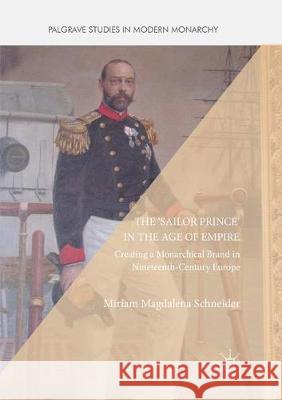The 'Sailor Prince' in the Age of Empire: Creating a Monarchical Brand in Nineteenth-Century Europe » książka
topmenu
The 'Sailor Prince' in the Age of Empire: Creating a Monarchical Brand in Nineteenth-Century Europe
ISBN-13: 9783319875903 / Angielski / Miękka / 2018 / 309 str.
The 'Sailor Prince' in the Age of Empire: Creating a Monarchical Brand in Nineteenth-Century Europe
ISBN-13: 9783319875903 / Angielski / Miękka / 2018 / 309 str.
cena 363,12
(netto: 345,83 VAT: 5%)
Najniższa cena z 30 dni: 346,96
(netto: 345,83 VAT: 5%)
Najniższa cena z 30 dni: 346,96
Termin realizacji zamówienia:
ok. 22 dni roboczych
Bez gwarancji dostawy przed świętami
ok. 22 dni roboczych
Bez gwarancji dostawy przed świętami
Darmowa dostawa!
Kategorie BISAC:
Wydawca:
Palgrave MacMillan
Seria wydawnicza:
Język:
Angielski
ISBN-13:
9783319875903
Rok wydania:
2018
Wydanie:
Softcover Repri
Ilość stron:
309
Oprawa:
Miękka
Wolumenów:
01











